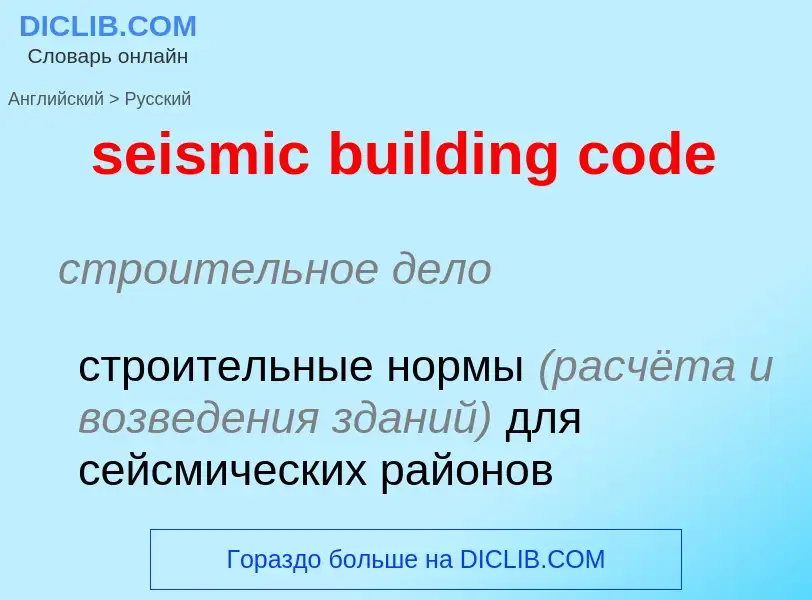Перевод и анализ слов искусственным интеллектом ChatGPT
На этой странице Вы можете получить подробный анализ слова или словосочетания, произведенный с помощью лучшей на сегодняшний день технологии искусственного интеллекта:
- как употребляется слово
- частота употребления
- используется оно чаще в устной или письменной речи
- варианты перевода слова
- примеры употребления (несколько фраз с переводом)
- этимология
seismic building code - перевод на русский
строительное дело
строительные нормы (расчёта и возведения зданий) для сейсмических районов
['bildiŋkəud]
общая лексика
строительные нормы и правила
строительное дело
строительный кодекс, строительные нормы и правила
нефтегазовая промышленность
сейсмический импульс
общая лексика
сейсмические волны
строительное дело
проектирование с учётом сейсмических воздействий
расчёт (зданий, сооружений) на сейсмические нагрузки (сейсмическое воздействие)
нефтегазовая промышленность
сейсмическая волна
нефтегазовая промышленность
сейсмический анализ
Определение
Википедия

A building code (also building control or building regulations) is a set of rules that specify the standards for constructed objects such as buildings and non-building structures. Buildings must conform to the code to obtain planning permission, usually from a local council. The main purpose of building codes is to protect public health, safety and general welfare as they relate to the construction and occupancy of buildings and structures — for example, the building codes in many countries require engineers to consider the effects of soil liquefaction in the design of new buildings. The building code becomes law of a particular jurisdiction when formally enacted by the appropriate governmental or private authority.
Building codes are generally intended to be applied by architects, engineers, interior designers, constructors and regulators but are also used for various purposes by safety inspectors, environmental scientists, real estate developers, subcontractors, manufacturers of building products and materials, insurance companies, facility managers, tenants, and others. Codes regulate the design and construction of structures where adopted into law.
Examples of building codes began in ancient times. In the USA the main codes are the International Building Code or International Residential Code [IBC/IRC], electrical codes and plumbing, mechanical codes. Fifty states and the District of Columbia have adopted the I-Codes at the state or jurisdictional level. In Canada, national model codes are published by the National Research Council of Canada. In the United Kingdom, compliance with Building Regulations is monitored by building control bodies, either Approved Inspectors or Local Authority Building Control departments. Building Control regularisation charges apply in case work is undertaken which should have had been inspected at the time of the work if this was not done.









